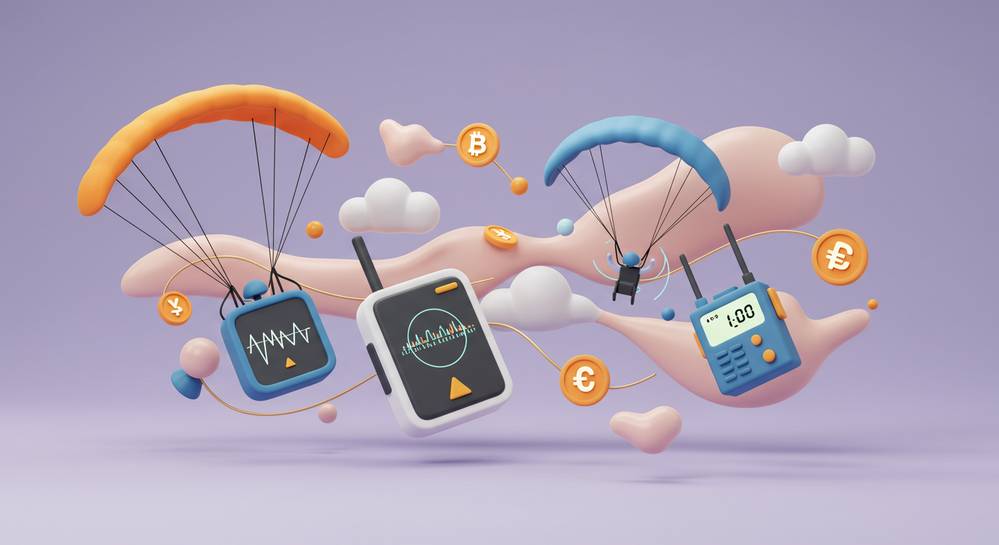Paragliding offers an unparalleled sense of freedom and adventure, allowing you to soar through the skies with nothing but a fabric wing and the wind beneath you. However, embarking on these thrilling journeys requires the right gear needed for paragliding adventures. Understanding each component ensures not only an enjoyable experience but, more importantly, a safe one. This guide delves into the crucial equipment that makes soaring through the skies possible and secure.
The Core Flight System: Wing, Harness, and Reserve

The core flight system forms the absolute foundation for any paragliding adventure. This essential gear needed for paragliding adventures comprises three critical components: the wing, the harness, and the reserve parachute. Understanding their roles and selecting appropriate equipment is paramount for safety and performance.
The Paraglider Wing: Your Primary Lift
Your paraglider wing, crafted from ripstop nylon, is the primary lift surface. Wings are categorized by EN ratings (A to D), reflecting passive safety and performance. Selecting the right wing aligns with your skill level, body weight, and intended flight style, ensuring optimal control.
The Harness: Connection and Protection
Beyond a mere seat, the harness connects pilot to wing, integrating vital back protection like airbags or foam. Modern designs prioritize comfort for extended flights. Various harness styles, from lightweight to aerodynamic pods, cater to diverse pilot needs and paragliding safety equipment requirements.
The Reserve Parachute: Ultimate Safety
An indispensable safety device, the reserve parachute is your last resort in an emergency. Stored securely in the harness, it deploys manually. Regular inspection and professional repacking are crucial for its reliability, ensuring this vital piece of paragliding safety equipment functions flawlessly.
Essential Navigational and Communication Tools

Beyond the core flight system, effective navigation and reliable communication are paramount for safe paragliding adventures. These tools provide critical information and connectivity, enhancing both safety and enjoyment. Essential gear needed for paragliding adventures extends beyond just flying.
Variometer: Vertical Movement Insight
The Variometer, or Vario, is crucial for understanding vertical movement. It provides audible and visual cues for climb and sink rates. This helps pilots locate thermals and make informed flight path decisions.
GPS Device: Navigation and Tracking
A dedicated GPS device or smartphone apps offer precise navigation. It tracks flight paths, records altitude, and identifies landing zones. This technology is invaluable for cross-country flights and post-flight analysis.
Two-Way Radio: Staying Connected
Reliable two-way radio communication is vital for coordinating with fellow pilots, ground crew, or retrieve drivers. Especially in unfamiliar terrain, a radio ensures constant connectivity. This is a critical safety net.
Helmet: Head Protection
A certified paragliding helmet is non-negotiable. It provides crucial head protection against impacts during launch, landing, or unforeseen events. Helmets meeting EN 966 standards are lightweight yet robust, a fundamental component of personal safety.
Personal Comfort and Protection Gear
Beyond primary flight systems, personal comfort and protection gear are crucial. This essential gear needed for paragliding adventures shields you from the elements. Proper attire directly impacts endurance and focus, ensuring a safer, more enjoyable flight experience.
Layered Clothing and Sturdy Boots
Altitude temperatures fluctuate rapidly. Layered clothing allows quick adaptation. Start with a moisture-wicking base, add insulating mid-layers, then a windproof outer shell. Additionally, sturdy boots are vital for ankle support during launches and landings, protecting against sprains on uneven terrain. Look for good grip and impact absorption.
Gloves for Hand Protection
Protecting hands from cold, wind, and line friction is paramount. Insulated, windproof gloves maintain dexterity and warmth. Some pilots use fingerless gloves for control, adding mittens for extra warmth when needed.
Protective Eyewear for Vision
Sunglasses or goggles are indispensable for eye protection. They shield against UV radiation, wind, dust, and glare. Polarized lenses improve terrain visibility by reducing glare. This enhances flight safety and comfort.
Supporting Accessories and Maintenance

Beyond the major components, several smaller accessories and maintenance tools contribute significantly to a seamless and safe paragliding experience. This crucial gear needed for paragliding adventures prolongs equipment life and prepares pilots for any eventuality.
Equipment Care and Field Repairs
A concertina packing bag is highly recommended for folding your wing. It preserves the leading edge shape and protects cell walls, extending your paraglider’s lifespan. A basic repair kit with adhesive patches and tape allows immediate field repairs, preventing minor damage.
Pre-Flight Wind Assessment
Understanding wind direction and speed is critical before and during launch. A portable wind sock or handheld anemometer provides accurate, real-time data. This enables safer decision-making for every flight.
Personal Safety and Sustenance
Minor injuries can occur. A compact first aid kit with essentials for cuts and scrapes is a sensible addition. Staying hydrated and energized is crucial for maintaining focus, so always carry water and high-energy snacks.
Mastering the skies in a paraglider is a journey of skill, confidence, and above all, preparedness. The right equipment is your silent partner, ensuring every flight is as safe as it is exhilarating. By prioritizing quality and understanding the function of each item, you invest in unforgettable aerial experiences. Each piece of gear, from your wing to your helmet, plays a vital role in your safety and enjoyment, enabling you to fully embrace the freedom of flight. Dive deeper into the world of aerial sports with Sporting Currents.


